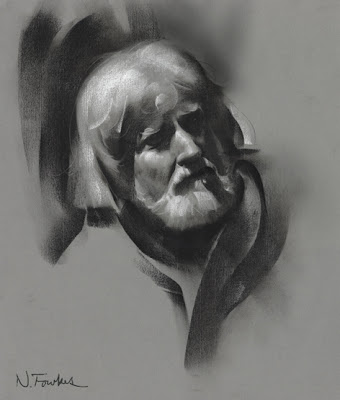The world offers unlimited numbers of cool things to draw. Yet, artists seem to have special affection for drawing folds in fabric. Folds dominate so many pictures, it is clear that artists are fascinated by them. Their complexity, their movement and their abstract quality give artists a lot to play with. Sometimes folds are such fun to draw that artists go a little overboard: Although folds in cloth have remained basically unchanged through the ages, the artist’s treatment of them has changed dramatically. Folds in medieval art were generally angular, while folds in Renaissance art were rounded. For a contrast between two different cultures, compare the carefully controlled, tightly rendered folds drawn by the great illustrator Durer in 16th century Germany... ...with the lush, spontaneous lines of another great illustrator, Bernie Fuchs, in the U.S. in the 1970s: Today, Christo brings the artist's obsession with folds into the modern era with his brilliant wrapped works... ...or
